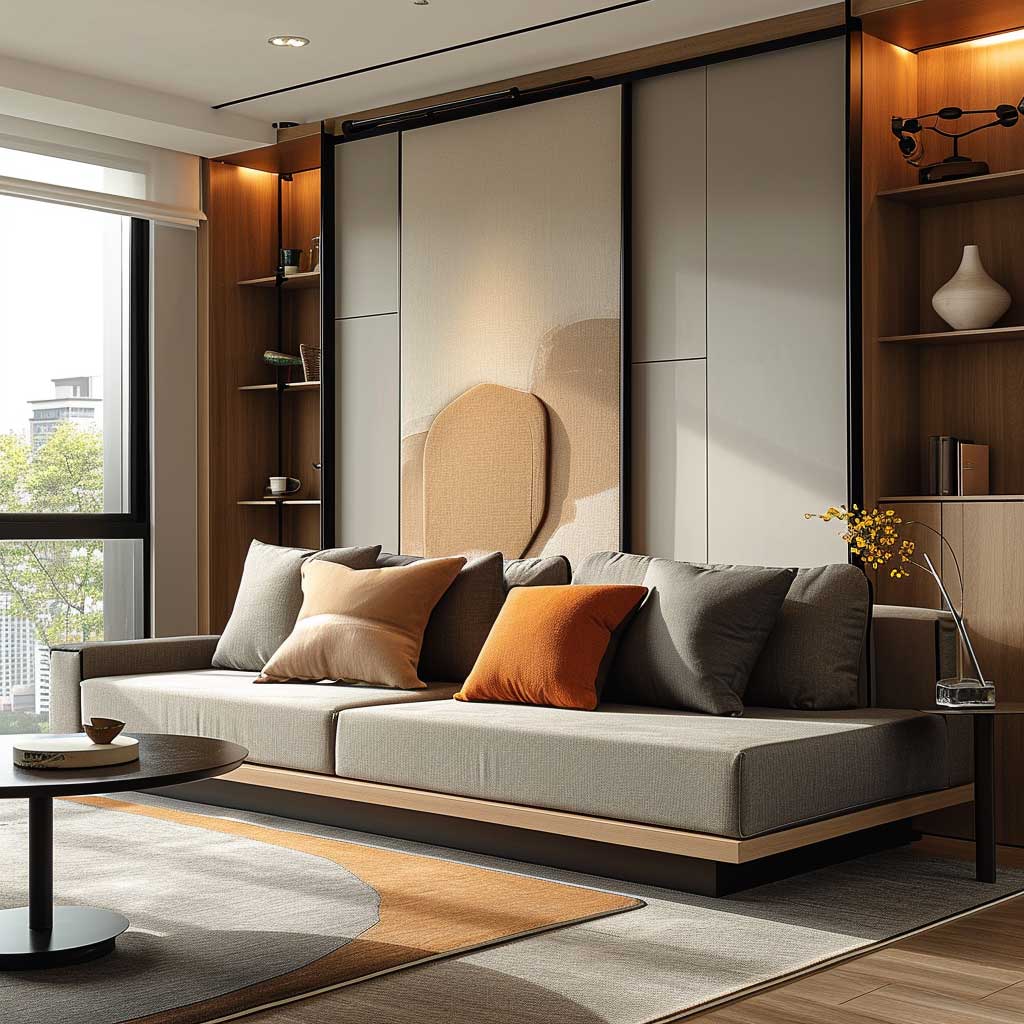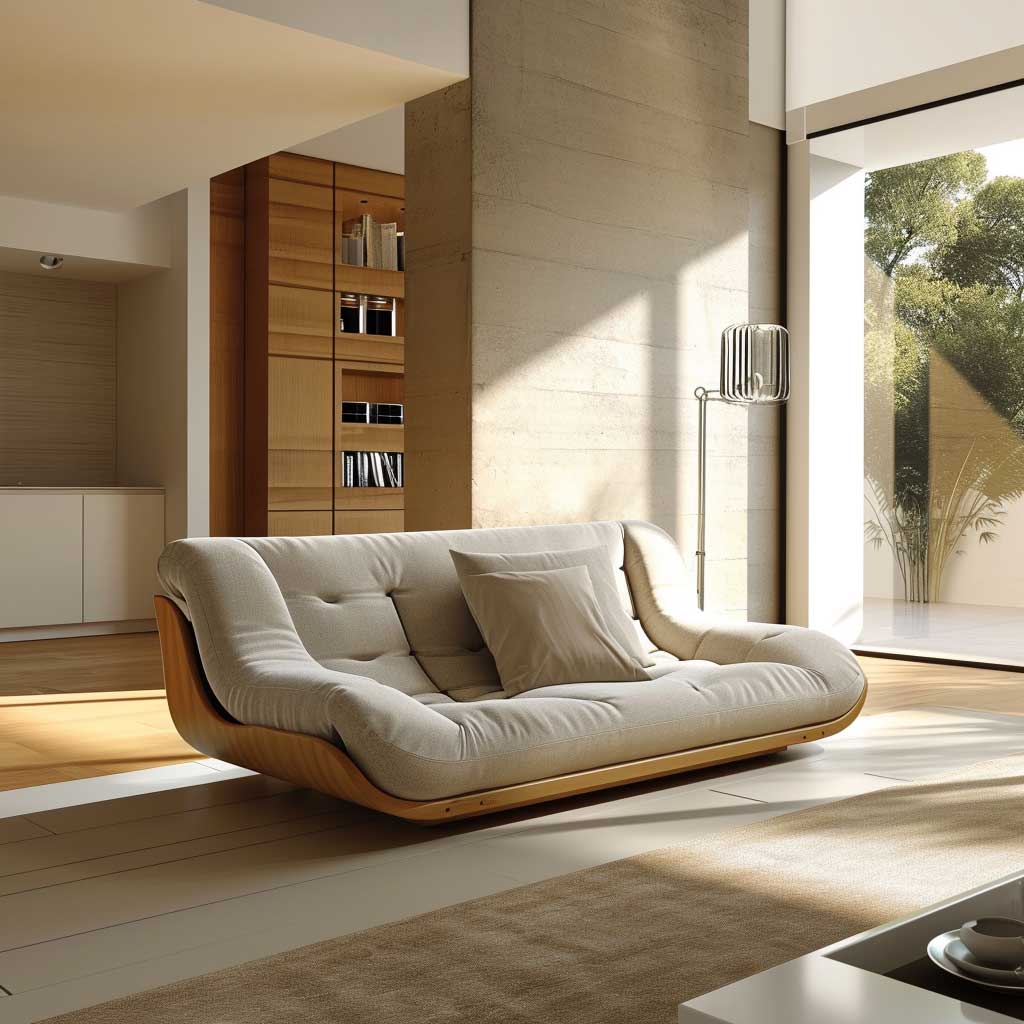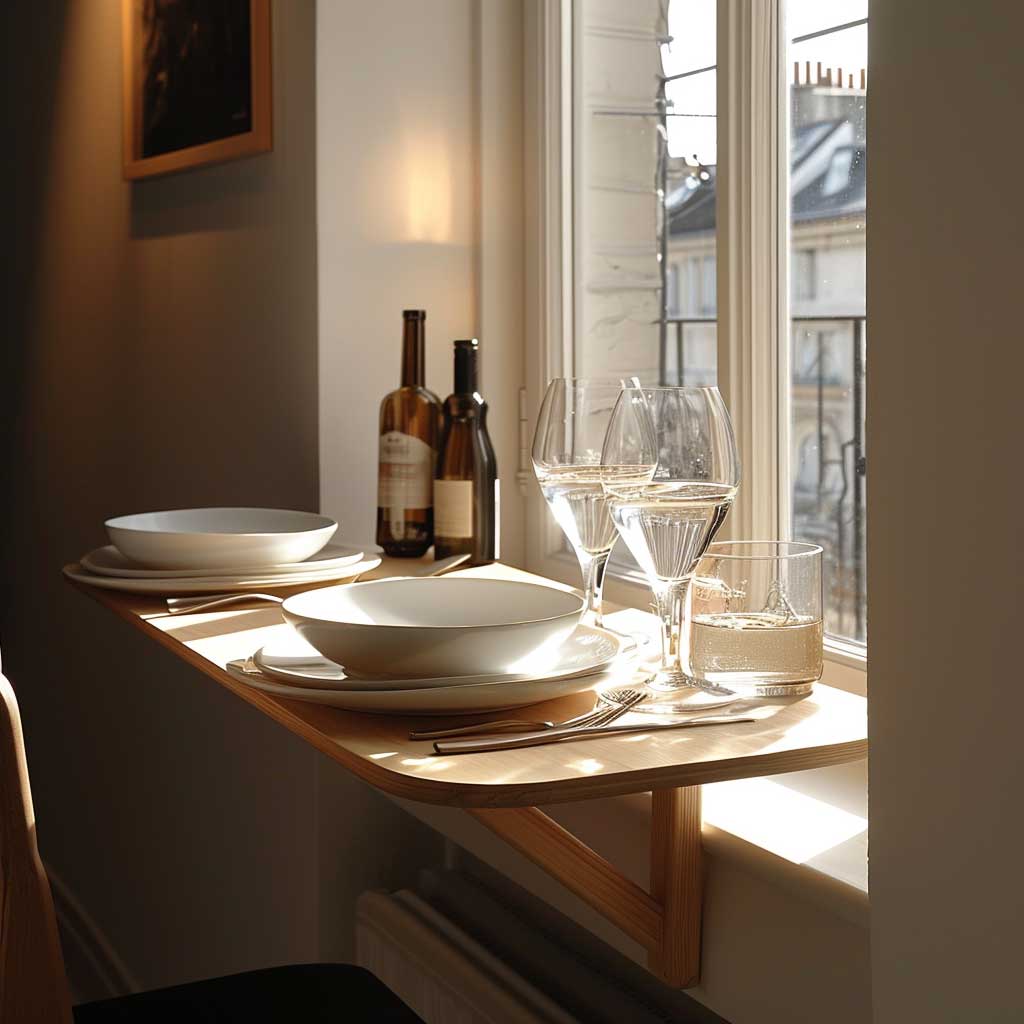The realm of interior design is witnessing a remarkable evolution with the advent of transformable furniture design, where functionality meets creativity to redefine the concept of space utilization. This innovative approach in home decor is not just about saving space; it’s about transforming the way we live and interact with our surroundings. Transformable furniture masterpieces are revolutionizing modern homes, offering versatility, style, and smart solutions to meet the dynamic needs of contemporary lifestyles.
Sleek Sofa Bed Revolution in Transformable Furniture Design




In the modern era of home design, transformable furniture design has emerged as a beacon of innovation and practicality. Among its varied offerings, the sleek sofa bed stands out as a remarkable example of this trend. It embodies the essence of versatility, combining the comfort of a sofa with the utility of a bed, all while maintaining an air of contemporary elegance.
The journey of the sofa bed in the context of transformable furniture design is a fascinating one. Originally conceived as a solution for small spaces, it has evolved far beyond its utilitarian roots to become a statement piece in modern homes. Today’s sofa beds are a far cry from the cumbersome, uncomfortable contraptions of the past. Designers have reimagined them as stylish, comfortable, and seamless additions to the living room, capable of transforming with an almost magical ease.
One of the key aspects of these modern sofa beds is their design sensibility. They embody the clean lines and minimalist aesthetic that are hallmarks of contemporary design. The emphasis is on sleek forms and understated elegance. The materials used are of the highest quality, ranging from luxurious leathers to soft, durable fabrics, ensuring that the sofa bed is not only a visual delight but also a comfortable resting place.
Functionality is at the heart of transformable furniture design, and the sofa bed is a testament to this. The mechanisms for transformation are ingeniously designed to be simple and smooth. With just a few movements, the sofa unfolds into a bed, making the transition effortless. This ease of transformation is crucial, as it ensures that the sofa bed is not just a novelty but a genuinely practical piece of furniture.




The versatility of the sofa bed extends beyond its dual functionality. Designers have ensured that these pieces fit into various interior themes, from the ultra-modern to the more eclectic and bohemian. Whether it’s a sleek, monochrome model for a minimalist living room or a brightly upholstered piece for a more vibrant setting, there’s a sofa bed to suit every taste.
Environmental considerations are also a key component of modern furniture design, and sofa beds are no exception. Many are made from sustainable materials and designed to last, countering the throwaway culture that has dominated much of furniture design in recent decades. This longevity is not just good for the planet; it also makes economic sense for the consumer.
The impact of the sofa bed on interior design is significant. It has changed the way people think about their living spaces, offering a solution that is both space-saving and stylish. In urban environments where space is at a premium, the sofa bed has become an essential piece of furniture, allowing homeowners to make the most of their living areas.
In summary, the sleek sofa bed is a shining example of how transformable furniture design can combine aesthetics, functionality, and sustainability. It represents a shift in furniture design, where flexibility and practicality are as important as appearance. In the modern home, the sofa bed is not just a piece of furniture; it’s a symbol of intelligent design and the changing nature of our living spaces.
Wall-Mounted Dining Table: A Transformable Design Wonder




The landscape of interior design is continuously evolving, with transformable furniture design playing a pivotal role in shaping modern living spaces. Among the most innovative examples of this trend is the wall-mounted dining table, a marvel of design that exemplifies the fusion of functionality and style. This transformative piece not only saves space but also adds a sophisticated touch to any dining area.
Wall-mounted dining tables represent a significant departure from traditional dining furniture. They are designed for the modern lifestyle, where efficiency and space optimization are paramount. The concept is simple yet ingenious: a table that folds away against the wall when not in use, freeing up valuable floor space. This feature is particularly beneficial in urban apartments and smaller homes, where every square inch counts.
The design of these tables is a testament to the creativity and ingenuity of modern furniture designers. When folded down, the tables are sleek and unobtrusive, blending seamlessly with the wall. In their expanded form, they transform into functional dining areas that can comfortably accommodate multiple diners. This transformation is typically achieved through a smooth and effortless mechanism, making the tables convenient for everyday use.
Aesthetically, wall-mounted dining tables are a perfect embodiment of the organic modern interior design ethos. They strike a balance between the natural and the man-made, often featuring materials like wood, metal, and glass. The choice of material not only influences the table’s appearance but also its functionality. Durable materials ensure longevity, while finishes can be chosen to complement the overall decor of the room.




The versatility of these tables extends beyond their foldable nature. Designers have crafted them in various styles, sizes, and finishes, catering to a wide range of tastes and interior themes. Some models come with additional features like built-in storage or adjustable surfaces, further enhancing their utility and appeal.
Environmental sustainability is another aspect where wall-mounted dining tables excel. By virtue of their space-saving design, they encourage a more efficient use of resources. Additionally, many designers focus on using eco-friendly materials and production methods, aligning with the growing consumer preference for sustainable products.
The impact of wall-mounted dining tables on interior design is profound. They challenge the conventional notions of furniture arrangement and room functionality, opening up new possibilities for creative space management. These tables are not just pieces of furniture; they are dynamic elements that adapt to the changing needs of the occupants.
In conclusion, the wall-mounted dining table is a standout example of transformable furniture design. It embodies the principles of modern interior design: efficiency, aesthetics, and adaptability. In the ever-evolving world of home decor, it represents a smart and stylish solution for contemporary living, proving that innovative design can indeed transform the way we live.
Modular Shelving System Redefining Transformable Furniture




In the dynamic world of interior design, the concept of transformable furniture design has taken a significant leap forward with the introduction of modular shelving systems. These systems epitomize the perfect blend of functionality, adaptability, and aesthetic appeal, offering a versatile solution for modern living spaces. They are not just storage units but transformative elements that can redefine a room’s layout and ambiance.
The essence of a modular shelving system lies in its flexibility. Unlike traditional, static shelving, these systems are designed to be reconfigured according to the user’s needs and preferences. This adaptability makes them an ideal choice for contemporary lifestyles, where change is a constant. The modules can be rearranged, added, or removed, allowing the shelving system to evolve with the homeowner’s life. This dynamism is a hallmark of modern design, reflecting a shift towards more personalized and versatile home furnishings.
From an aesthetic standpoint, modular shelving systems are a testament to the elegance of simplicity. Their design often features clean lines and minimalistic forms, emphasizing the beauty of the materials used. Whether it’s a rich, natural wood finish or a sleek, industrial metal, these materials are chosen not only for their durability and functionality but also for their visual impact. The result is a piece of furniture that is both practical and striking, capable of enhancing the decor of any room.
One of the most appealing aspects of modular shelving systems is their ability to maximize space utilization. In urban homes where space is at a premium, these shelving systems provide an efficient way to store and display items without cluttering the room. They can be tailored to fit any space, from a large wall in the living room to a small corner in the study, making them a versatile solution for storage and display needs.




The environmental impact of these shelving systems is also noteworthy. Many are made from sustainable materials or utilize eco-friendly manufacturing processes, aligning with the growing demand for responsible design. By offering a long-lasting and adaptable furniture solution, they also reduce the need for frequent replacements, further contributing to a more sustainable consumption pattern.
The influence of modular shelving systems on interior design is profound. They challenge traditional notions of static room layouts, offering a dynamic approach to furniture arrangement. This flexibility encourages creativity, allowing homeowners to experiment with different configurations and uses for their shelving. It’s a design that responds to the user, adapting to their changing needs and preferences over time.
In summary, the modular shelving system represents a significant evolution in transformable furniture design. It combines aesthetic appeal with practical utility, offering a flexible solution that can adapt to the changing needs of modern living. These shelving systems are more than just furniture; they are a reflection of a design philosophy that values adaptability, personalization, and sustainability. In the landscape of contemporary interior design, they stand as a testament to the ingenuity and forward-thinking approach that defines modern furniture design.
Transformable furniture design marks a significant milestone in the journey of interior design, offering ingenious solutions that cater to the evolving needs of urban living. These masterpieces are not just pieces of furniture; they are a testament to human ingenuity and the endless possibilities of design. By embracing such innovative solutions, homes can become more adaptable, efficient, and stylish, reflecting the changing rhythms of our daily lives. As we continue to push the boundaries of design and functionality, transformable furniture stands at the forefront, leading the way towards a future where our living spaces are as dynamic as we are.












